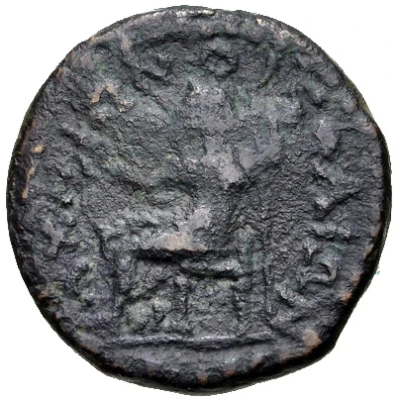


© Classical Numismatic Group, Inc.
Tetrachalkon Thisoa 191 BC - 146 BC
| Bronze | 4.62 g | 18.5 mm |
| Issuer | Achaean League (Achaia) |
|---|---|
| Period | Second Achaean League (280 BC - 146 BC) |
| Type | Standard circulation coin |
| Years | 191 BC - 146 BC |
| Value | 4 Chalkoi (1⁄12) |
| Currency | Drachm |
| Composition | Bronze |
| Weight | 4.62 g |
| Diameter | 18.5 mm |
| Shape | Round (irregular) |
| Technique | Hammered |
| Orientation | Variable alignment ↺ |
| Demonetized | Yes |
| Updated | 2024-10-09 |
| Numista | N#153390 |
|---|---|
| Rarity index | 100% |
Reverse
Female figure (Achaia) seated left, holding wreath and scepter
Script: Greek
Lettering:
ΑΧΑΙΩΝ
ΘΙΣΟΑΙΩΝ
Comment
Warren, Bronze, 916–924.
Interesting fact
The Tetrachalkon coin was used as a form of currency in the Achaean League, a confederation of cities in ancient Greece, during the 2nd century BC. The coin's name, Tetrachalkon, means "four chalkoi" in Greek, which refers to the four small bronze pieces that were used as change during that time. The Tetrachalkon coin was equivalent to four chalkoi, and it was used for small transactions and purchases. It's interesting to note that the Tetrachalkon coin was made of bronze, which was a common material for coins during that time period. The use of bronze for coins was practical because it was durable, easy to work with, and had a low intrinsic value, making it ideal for small transactions. Overall, the Tetrachalkon coin is an interesting piece of history that provides insight into the monetary systems and trade practices of ancient Greece.



